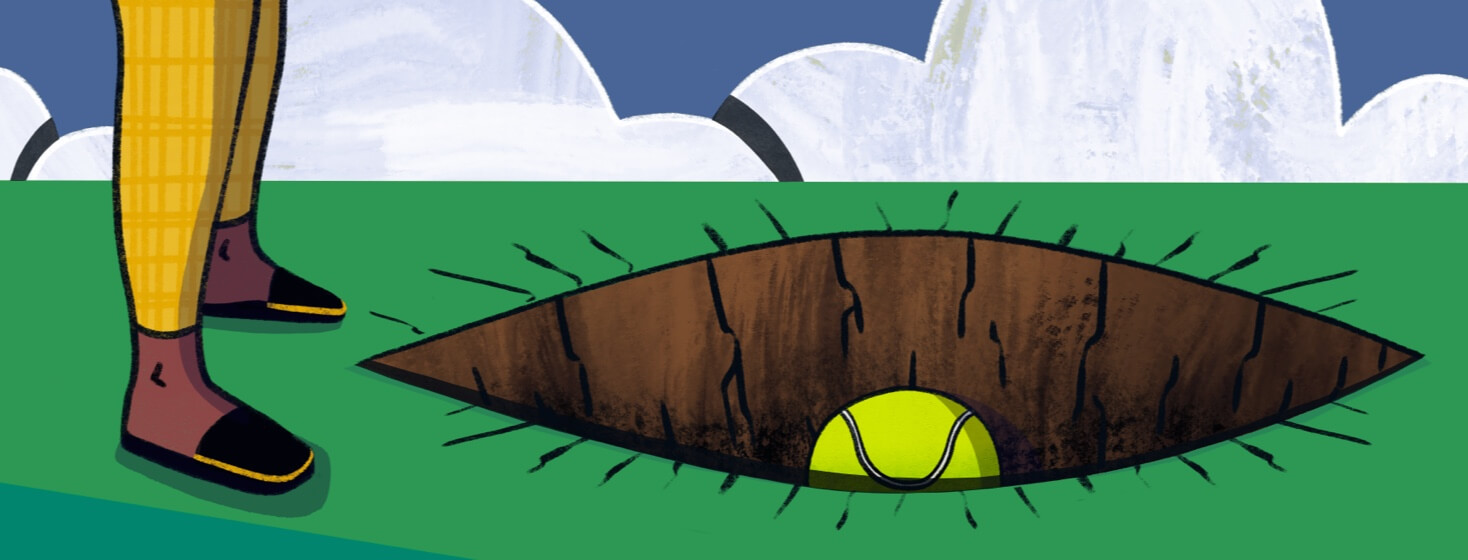Depth Perception and Me
Rafael Nadal just won the men’s tennis championship on the red clay courts of the Roland Garros in Paris for the 14th time.
As he triumphed against a much younger player, he couldn’t feel his left foot because of the injections to block the pain from an old injury.
Nadal has said that the pain is always somewhere. He was quoted in the Wall Street Journal after his win that “It’s not that he’s injured he is just forever “a player living with an injury.”
In the second year after my diagnosis of wet macular degeneration (AMD), I feel as though I am always living with an injury.
Depth perception and AMD
I have always loved playing tennis. I’m not very good, never have been. Actually, badminton is my favorite game. And, before I was diagnosed with AMD, I was learning to play pickleball. Pickleball is more like doubles tennis. The racquet is an oversized ping pong paddle and the ball is a Wiffle ball.
My trouble hitting the pickleball should have been the first sign that something was wrong with my vision. My hand-eye coordination had never been great but 6 months before my diagnosis I realized that I was having new difficulty getting to the ball.
The issue was depth perception.
An AMD symptom and side effect
According to the American Academy of Ophthalmology, depth perception is the ability to see things in 3 dimensions (including length, width, and depth), and to judge how far away an object is. If I am going to hit a tennis ball or not pour too much tea into a cup, I need to use depth perception.
For accurate depth perception, you generally need to have binocular (two-eyed) vision. In a process called convergence, our 2 eyes see an object from slightly different angles and our brain compares and processes the 2 sets of information to form a single image. When both eyes see clearly and the brain processes a single image effectively, it is called stereopsis.
People who rely on vision primarily in one eye (called monocular vision) may struggle with depth perception. Because I have vision loss in one eye from AMD, I’ve developed some ability to rely on the vision in my “good eye” to compensate. My brain has adjusted in various ways to make up for the limited visual input from just one eye.
Serious side effects
Giving up pickleball is not the worst thing that can happen to you with impaired depth perception. You can lose the ability to distinguish the distance between your car and the one in front of you. You can have trouble telling the difference between the curb and the pavement. You can have trouble navigating stairs.
The first is annoying, the other 3 can be deadly.
What to do?
It may sound silly but I practice putting the cap on my pen. I move the cap from hand to hand and do it up and down.
A low vision specialist recommended drawing a grid of 9 circles (3 rows of 3) and practicing touching your pen or finger to the circles.
All my coffee and tea cups now have white interiors. A lot easier to see how much coffee is in a cup up against a white background.
Be sure that there’s good lighting on the stairs. If necessary and possible, paint the bottom stair a bright color.
Make an appointment with a low-vision optometrist to be evaluated for bioptic lenses. These glasses have a miniature telescope mounted on one or both of the eyeglass lenses. Some states allow people with low vision to drive with the use of bioptic lenses.
Living with an injury
I’m going to reach out to coaches and see how I could possibly adapt my vision to play badminton or simply hit a tennis ball against a backboard or try a slow version of pickleball. It isn’t about winning or being a champion, it is about having fun for as long as I can.
Living and playing with an injury is not the end of the world. Just ask Rafael Nadal.

Join the conversation